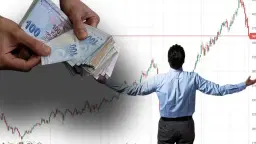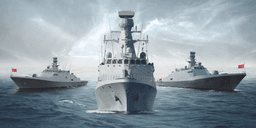“Human beings are pattern-seeking and storytelling animals,” said Edward Leamer, a professor in economics. That is after all, what science is also about; you look for patterns and tell coherent stories about them. Today, let me tell you about a couple of persistent patterns regarding the Turkish economy.
The first is about structural change. Some 40 years ago, Turkey was a sleepy agrarian country. In 1980, 80 percent of Turkish exports were primary products and the total volume of exports was around a meager $3 billion. By 2000, Turkey had become an industrial country. Some 80 percent of its exports were now industrial products and the volume of exports reached around $30 billion. Being in the customs union of the EU helped Turkey increase these numbers. Today, the share of industrial products within total exports is still around 80 percent, but our export volume increased to around $140 billion. Turkey today is an important industrial country in its region.
The second pattern is about Turkey’s relative performance. The list of the world’s top 15 industrial countries says a lot about Turkey’s transformation. The list is based on the size of industrial value added by countries. Turkey entered it in 1990, hung on until 2000, but dropped out afterwards. Today, we are muddling around between number 16 and 17.
What happened, you may ask? India, Taiwan and Indonesia have become more prominent industrial powers throughout the first quarter of the 21st century. Why is Turkey falling behind? Because it relies solely on domestic demand to achieve higher growth rates. The unending election cycles are not helping in preventing this. Domestic demand is just too sweet for everybody to let go. Hence, Turkey became an industrial country by opening up, but is now losing its prominence as an industrial country by clamming up. Turkey is no longer talking about biotechnology investments, or adjustments for the fourth industrial revolution. All we do is brag about big public construction projects. That also comes with an indelible image problem that chokes the tourism sector, traditionally a sorely needed flow of foreign exchange earnings.
During our crisis with the Dutch, I remember watching a video of Dutch police trying to control angry Turkish demonstrators. One was challenging the Dutch police, yelling “Come, come and crush us,” and another was trying to calm him down, saying “Hey, they can arrest you if you act like this, there may be consequences. Be careful.” “Come on,” the angry one retorted “This is not Turkey, this is Europe.” This perception gap, this image problem, even in the eyes of Turks, is hurting Turkey. If you want to stop the erosion of Turkey’s industrial base, this has to stop. Clamming up is not good for Turkey’s economy.

This commentary was published in Hürriyet Daily News on 08.04.2017





